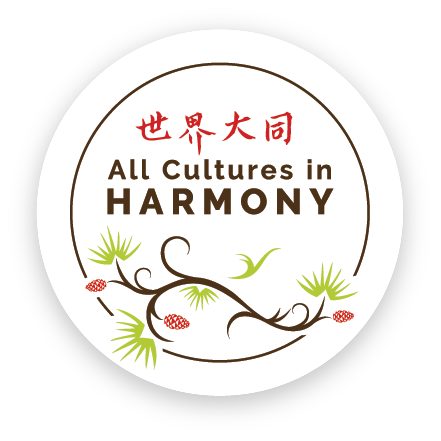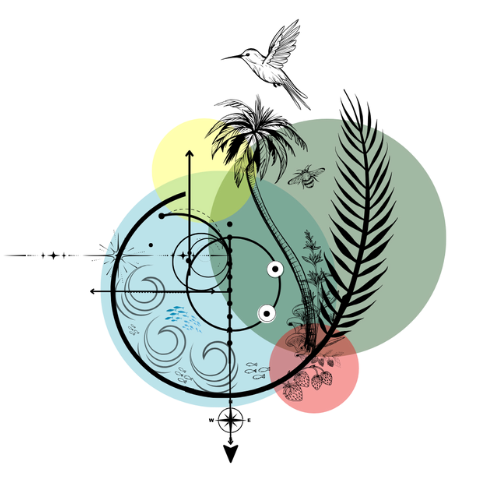How does it work?
Herbal as remedies or therapy or treatment, those plants used as decoction, with need water, or extract as need alcohol based, and or any method, and used like medicine substance from plants or use plant extract to treat illness. Herbs contain many ingredients, which work together to produce beneficial effects of the whole plant or herbs.
Herbal Medicine – part of ancient tradition of healing using plants, parts of the plants valued for medicinal properties, scents, aromatic, therapeutic, flavour, essence, sometimes called herbal, botanical, phytomedicine which used of plants, herbs, seeds, fruits, berries, stem, roots, leaves, bark, grass, flowers, wild grass, spiritual plants for medicinal purposes.
Herbal medicine is a natural entity so our body can respond positively, can help healing & improve our health. In herbal supplements came in all forms, dried, chopped, powder, capsule, liquid, in how it used ex. Brewed tea, (decoction)tinctures, gels, cream, add to water. In a way, fresh herbs, tincture, teas, poultices.
In terms of the bodily system, is it going to be beneficial, if a person/client situation, or myself, in terms of constitution, mode of healing, depends on person vital force, energy, constitution, diagnoses, or what person underlying issues, in other words follow herbalist principles.
Example: aromatic facet, in perfumery, blending together several notes and ingredients together to create a distinct fragrance. The citrus family, floral family, woody family, fern family. Olfactory, notes aromatic, which have distinct categories, lavender, mint, aniseeds notes. Can be healing properties for stress.
Lavender notes: aromatic herbs: lavender, lavandin, rosemary, thyme, sage, mug worth, they also used in cooking, airy, floral, camphorated medicinal fresh scent, bergamot, floral tones, olfactory kind, and for relaxation.
Bach flower remedies- diluted, water capture the essence, energetic imprints, utilising the vibration to reconnect through help of beautiful flowers.
Dandelion- daisy family, bitter, weeds, lawns, most indestructible, perennial. I like salad helps (sluggish liver, constipation, urinary, water retention).
When it comes to Emergency: cold, respiratory which involve lungs, breathing, this may be a complex condition. I am aware of the “Emergency” red flag! easy to give relief but am going to refer to another practitioner specialist.
Amla
Amla, also known as Indian gooseberry, is one of the most antioxidant herbal fruits on Earth. A wonder berry. Commonly used in Ayurvedic herbal preparations.
Indian gooseberries are not to be confused with Barbados gooseberries, Cape gooseberries, Chinese gooseberries (also known as kiwi fruit), Jamaican gooseberries, or Tahitian or star gooseberries.
A Powerful Source of Antioxidants
Amla is, on average, the single most antioxidant-packed whole food on the planet. One teaspoon of gooseberry powder costs about four pennies and provides 1,500 units of antioxidant power, which is more than the average person gets in an entire week.
Reducing Our Cholesterol
Just 500 milligrams of powdered amla, which is about a tenth of a teaspoon, may work as well as Zocor, a leading cholesterol lowering drug.
Arterial Function
Amla may reduce artery stiffness, so it may be a good alternative to statin drugs in individuals with diabetes who have artery dysfunction because of its benefits without the adverse effects of drugs, which may include muscle damage or liver dysfunction.
Dyspepsia is a fancy word for an upset stomach—feelings of fullness, discomfort, nausea, bloating, belching—affecting up to one in five individuals. One teaspoon of dried Indian gooseberry powder three times a day may work as well as a gel antacid every three hours.
Amla can be purchased online or at Indian spice stores. Whole Indian gooseberries can be found in the frozen section of Indian grocery stores, but some find them inedible—astringent, sour, bitter, and fibrous all at the same time. The powder isn’t much tastier, but it can be disguised in something with a strong flavor, like a smoothie. Alternatively, amla can be packed into capsules.
Amla Fruit
Amla can be bought in various forms: frozen, dried. (nutritionfacts.org).
Nettles
Official name: Urtica dioica
Common name: Nettle, common nettle, stinging nettle
TCM name: Hsieh-tzu-ts’ao
Ayurvedic name: Vrishchikali
Family: Urticaceae
Parts used: Stalks and leaves, rhizomes, seeds
Constituents: Tanins, iron, histamine, gluconins, Vit A B C and K.
Properties Astringent Alterative Anti- inflammatory Galactogogue Hemostatic Anti-asthmatic Rubefacient Diuretic Nutritive
Energetics: Ruling planet: Mars. Hot and dry
Taste/smell: Astringent, salty
Native to: Europe, Asia
Geographic Distribution: Temperate regions throughout world
Botanical Description: Grows from 2-6 ft tall on a square, fibrous stem with deep grooves running along its length. The dark green leaves are ovate and sharply toothed with a heart-shaped base and a pointy tip. They are located in opposite pairs and become progressively smaller toward the top of the stem. The leaves and stems are covered with tiny, hollow hairs tipped with silica. Nettle spreads by rhizomes, so each plant can have multiple stem and thus nettle typically grows in dense colonies. The tiny, inconspicuous green flowers droop in bunches from the leaf axils.
Sustainability issues: None known.
Harvesting: May- September. Harvest top six inches of plants in spring and early summer before flowering. Harvest seeds in fall once the bundles of tiny flowers look fluffy and are drooping down toward the stem. Harvest rhizomes when ground is diggable in spring or after first frost in autumn.
Folklore: Nettle has long been recognized for its bounty of nutrition as well as its sting. Folk medicine and lore worldwide attribute the powers of protection and fertility to this incredible plant. Wisdom handed down from ancient times includes advice on using nettle to protect one’s self from lightning, to enhance fertility particularly in men, to reduce the swelling of arthritic joints, to heal the sick and bestow courage on those who carry it as well as how to avoid being stung by nettle. In Kawaiisu tribal practice as in Celtic lore, nettle serves as a threshold guardian. Nettle fibers have been found in burial cloths from the Bronze age, also closely linking this plant with the threshold between life and death and giving credence to the various folklore bits that describe Nettle as growing from or near the dead.
Nettle was the Anglo-Saxon sacred herb wergula, and in medieval times nettle beer
was drunk for rheumatism. Nettle’s high vitamin C content made it a valuable spring tonic for our ancestors after a winter of living on grain and salted meat, with hardly any green vegetables. Nettle soup and porridge were popular spring tonic purifiers, but a pasta or pesto from the leaves is a worthyly nutritious modern alternative. Nettle soup is described by one modern writer as ‘Springtime herbalism at one of its finest moments.’ This soup is the Scottish kail. Tibetans believe that their sage and poet Milarepa (AD 1052-1135) lived solely on nettle soup for many years until he himself turned green.
Uses/Indications: For the blood and the skin
Physical Uses: Being hot and dry, it rids the body of phlegm and was traditionally taken as a spring tonic cleanser during the winter rains. So it should be used for asthma, wheezing, productive bronchitis and catarrh. Drunk as a tea or gargles with, nettle helps to relieve inflammation of the throat, such as tonsillitis and laryngitis. The fresh juice, taken stops bleeding gums. Being hot and dry, nettle is used to treat skin irritations and may be used in eczema, urticaria, heat rash, boils, acne and any hot, dry itchy skin diseases.
The tannins contained in the herb make it a strong astringent and therefore excellent for hemorrhages anywhere in the body. It is used for heavy periods, bleeding after childbirth, nose bleeds and as a poultice for wounds.
It is an excellent herb to take in late pregnancy; hits high iron content will regulate hemoglobin levels and prevent anemia and it also stimulates the
production of breast milk. Use at any time when there has been a loss of blood and the person is anemic. Its Martian aspects increases the iron content in the blood.
Nettle is a powerful diuretic and is used to clear the body of uric acid which is found in high quantities in the bloodstream with arthritis, gout and rheumatism.
The powdered seeds have been used with some success in goiter and weight (obesity) problems.
Emotional Uses: Nettle builds and empowers the fire element in a person and helps to break up excessive waterlogged emotions to allow the person to contact rage and anger and cut through self-pity and victimhood. Nettle will warm a frozen heart and allows for passion and intensity to blaze forth. It is for evoking the warrior within, in order to feel our internal power and resilience.
Drink a cup of nettle tea every morning. Continue for as long as the need is felt.
Preparation & Dosage
- – Tincture: 2-5 ml (1:5 in 40%), 3 times per day
- – Tea: Infusion of 1-3 tsp dried nettle in 1 cup boiling water, infused 10-15 minutes, 3 times per day
- – Juice: 5 to 10 ml of fresh juice 3x per day
- – Seeds: 1 tsp – 1 tbsp nettle seeds per day
- – External: with fresh plant as needed
Safety: Obviously you have to be very careful handling fresh Nettles but once dried or taken as a tincture they are
extremely safe to use, even in high or frequent doses. No adverse reactions are expected and Nettles may safely be used during pregnancy or breastfeeding (where they may be expected to encourage the production of healthy milk). Internal use may decrease the efficacy of anticoagulant drugs.
Recipes:
- Electuary of Nettle
Beat some dried nettle leaves into a find powder and pass through a hair sieve to remove any large particles. To 25g (1oz) of powder, add 75g (3oz) of clarified honey and mix well in the mortar. Store in an earthenware pot.
Dose: 1tsp to purge the body of phlegm when needed.
- Gypsy remedy for aching joints
Take a bunch of nettles and beat on the sore joints until great heat has been produced. Then apply cotton cloths previously soaked in vinegar. After several hours repeat.
Experiences: Nettle can be found anywhere so I have made teas and tinctures and poultices. I have a cup of nettle tea once in a while and I enjoy it very much.
Book a free discovery call with me today to discuss how Nutrition Living Naturally can help you.






Nutrition Living Naturally

Nutrition Living Naturally. Registration Number ZB 644 329. UK.
